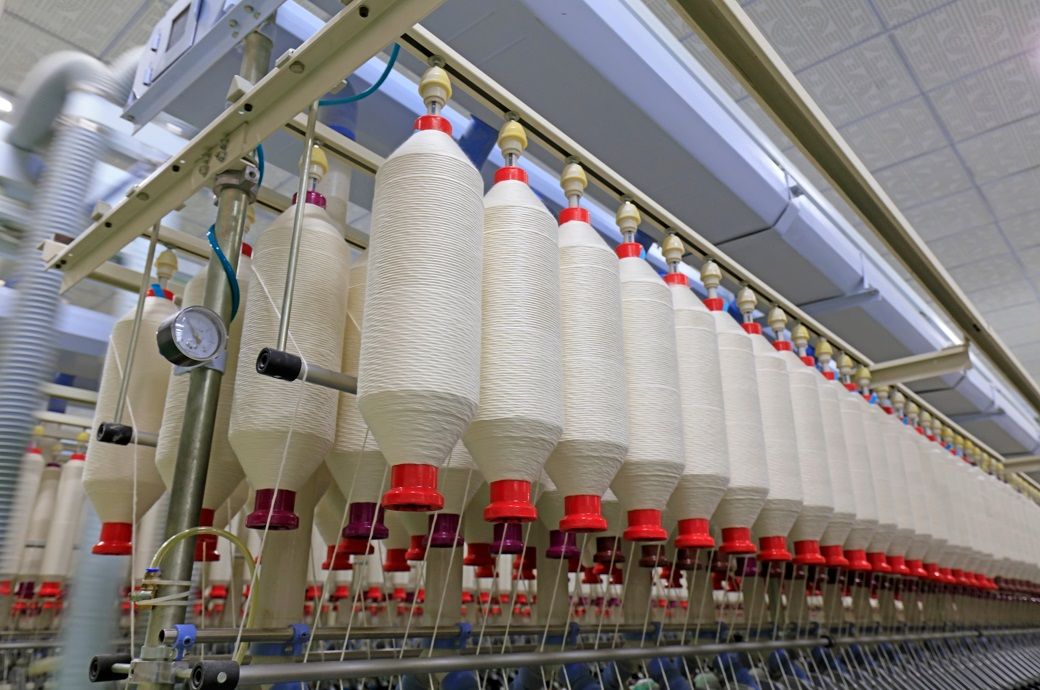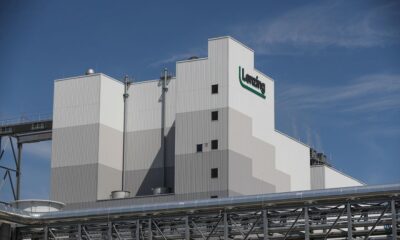Fashion
US reconciliation act to raise real potential output: CBO

Real GDP is the nation’s economic output adjusted to remove the effects of changes in prices.
In the near term, the net effects of the 2025 reconciliation act, higher tariffs and lower net immigration on aggregate demand and the labour supply drive most of the changes in the agency’s forecast. The reconciliation act reduced taxes for the vast majority of US households.
US growth in 2026 would be 0.4 pp higher than in the last projections by the non-partisan CBO, reflecting the 2025 reconciliation act’s boost to consumption, private investment and federal purchases and the reducing impact of uncertainty about US trade policy.
In 2027 and 2028, the effects of reduced net immigration and the waning of the reconciliation act’s near-term boost to demand would drag growth.
In 2025, the growth of real GDP is projected to be 0.5 percentage points lower in CBO’s current projections than it was in the agency’s January 2025 projections, primarily because the negative effects on output stemming from new tariffs and lower net immigration more than offset the positive effects of provisions of the reconciliation act this year.
In 2026, the reconciliation act’s effects boosting growth dominate the effects slowing it that stem from the reduction in net immigration. Waning of the elevated uncertainty about trade policy provides modest support to economic growth next year as supply chains begin to adjust to the higher tariffs.
Growth next year would be 0.4 percentage points higher than in the previous projections, reflecting the reconciliation act’s boost to consumption, private investment and federal purchases and the diminishing effects of uncertainty about US trade policy.
In 2027 and 2028, the effects of reduced net immigration on the labour force and the waning of the reconciliation act’s near-term boost to demand would act as a drag on growth.
Partially offsetting those effects, an increase in domestic production, driven by higher tariffs, provides a boost to economic growth. As a result, real GDP growth in those years is roughly the same as it was in CBO’s January 2025 projections.
In addition to boosting aggregate demand in the near term, the reconciliation act will, in CBO’s assessment, raise real potential output by increasing the supply of labour, the capital stock and the and total factor productivity (TFP), the average real output per combined unit of labour and capital, excluding the effects of cyclical changes in the economy.
Meanwhile, the CBO estimated that President Donald Trump’s tariffs would shrink the US economy and add to inflation while reducing the federal deficit by $2.8 trillion.
In a published letter to Senate Democrats, the CBO estimated the budgetary and economic effects of tariff increases that were implemented through executive actions between January 6 and May 13.
The analysis found that shrinking of the US economy would vary but said that tariffs would reduce GDP growth by 0.06 per cent each year, adding that real GDP will be 0.6 per cent lower in a decade than CBO’s earlier forecasts.
“In CBO’s assessment, the changes in tariffs will reduce the size of the US economy—in part because of tariffs imposed by other countries in response to the increases in US tariffs. After accounting for that change in the size of the economy, CBO estimates that the changes in tariffs will reduce total federal deficits by $2.8 trillion,” the letter said.
“Reductions in investment and productivity stemming from higher tariffs will be partially offset by increases in resources available for private investment resulting from the reduction in federal borrowing. CBO estimates that, on net, real (inflation-adjusted) economic output in the United States will fall as a result,” it added.
Fibre2Fashion News Desk (DS)
Fashion
Philippine GDP expands 4% YoY in Q3 2025: Official data

One of the main contributors to this growth was the growth in wholesale and retail trade.
All three major economic sectors—agriculture, forestry and fishing; industry; and services—posted YoY growths of 2.8 per cent, 0.7 per cent and 5.5 per cent respectively in the quarter.
The Philippine GDP grew at 4 per cent YoY in Q3 2025, official statistics show.
One of the main contributors to this growth was the growth in wholesale and retail trade.
Government final consumption expenditure, exports of goods and services, and such imports posted YoY growths of 5.8 per cent, 7 per cent and 2.6 per cent respectively in the quarter.
Gross national income grew by 5.6 per cent YoY.
On the demand side, household final consumption expenditure grew by 4.1 per cent YoY in the quarter.
Government final consumption expenditure, exports of goods and services, and such imports posted YoY growths of 5.8 per cent, 7 per cent and 2.6 per cent respectively.
Meanwhile, gross capital formation posted a decline of 2.8 per cent YoY.
Gross national income grew by 5.6 per cent YoY in the quarter, a PSA release said.
Net primary income from the rest of the world posted a YoY growth of 16.9 per cent during the quarter.
Fibre2Fashion News Desk (DS)
Fashion
Jordan’s garment-leather exports up 3% YoY to $1.63 bn in Jan-Aug 2025

Garments accounted for 90 per cent of the total exports in the sector during the period, Ihab Qadri, the sector’s representative at the chamber, said.
Qadri attributed the growth to strong external demand, particularly from European markets. The sector’s exports to Italy surged by 121 per cent YoY and to Germany by 97 per cent YoY.
Jordan’s garment and leather sector exported goods worth $1.636 billion between January and August 2025—a 3-per cent YoY rise, the Jordan Chamber of Industry said.
Garments accounted for 90 per cent of the total exports in the sector in the period.
The sector’s exports to Italy rose by 121 per cent YoY and to Germany by 97 per cent YoY.
A similar trend was seen in the Arab and Latin American markets.
A similar trend was witnessed in the Arab and Latin American markets as well. Exports to Saudi Arabia were up by 24 per cent YoY and shipments to Mexico rose by 20 per cent YoY during the period.
Exports to the United States rose by 5 per cent despite new US tariffs, domestic media outlets reported.
The garment and leather sector contributed 21 per cent of Jordan’s total industrial exports, Qadri said. The industry comprises over 1,000 factories, employing nearly 96,000 workers, 70 per cent of whom are women.
Qadri highlighted progress on a planned integrated industrial cluster for the leather and garment industries, supported by the International Finance Corporation (IFC). The project has completed feasibility studies and site selection, with promotional efforts underway to attract investment and local labour.
The cluster aims at strengthening supply chains, reducing production costs, accelerating delivery times and addressing challenges like raw material shortages that account for about 60 per cent of total production costs, he added.
Fibre2Fashion News Desk (DS)
Fashion
Fine-count cotton yarn demand firms in south India; prices steady

In Mumbai, demand remained slow as the weaving sector continues to face labour shortages. Cotton yarn prices have not shown significant movement in recent days. A trader from Mumbai told Fibre*Fashion, “A large number of power looms are closed or running partially due to a shortage of workers. Workers from Bihar are expected to return next week after voting. We hope cotton yarn demand will improve once they are back.”
In Mumbai, ** carded yarn of warp and weft varieties were traded at ****;*,***–*,*** (~$**.**–**.**) and ****;*,***–*,*** per * kg (~$**.**–**.**) (excluding GST), respectively. Other prices include ** combed warp at ****;***–*** (~$*.**–*.**) per kg, ** carded weft at ****;*,***–*,*** (~$**.**–**.**) per *.* kg, **/** carded warp at ****;***–*** (~$*.**–*.**) per kg, **/** carded warp at ****;***–*** (~$*.**–*.**) per kg and **/** combed warp at ****;***–*** (~$*.**–*.**) per kg, according to trade sources.
-

 Tech1 week ago
Tech1 week agoDisney content has gone dark on YouTube TV. Here’s what customers should know
-

 Business1 week ago
Business1 week agoAndy Jassy Reveals Real Reason Behind Amazon 14,000 Job Cuts — And It’s Not AI
-
Sports1 week ago
Ravens are back in the hunt after two straight wins and Lamar Jackson’s return
-

 Tech1 week ago
Tech1 week agoKeep Tabs on Your Pets and Kids With the Best Indoor Security Cameras
-

 Sports1 week ago
Sports1 week agoTudor’s Juve exit means McKennie must prove himself all over again
-

 Tech1 week ago
Tech1 week agoGear News of the Week: Withings Launches Its Pee Scanner, and Samsung Shows Off a Trifold Phone
-

 Fashion1 week ago
Fashion1 week agoIndia’s Raymond Lifestyle Ltd’s Q2 FY26 revenue rises 8% to $211.5 mn
-

 Politics7 days ago
Politics7 days agoPolitical violence kills almost 300 since Hasina’s fall: rights group

















